As part of my job I have always supported manufacturing facilities to establish a quality management system and get certified. In the planning and implementation process, I consider training as one of the most important elements and of course, it needs to be addressed to everybody in the organization, management staff, employees, workers, etc.
However, some of the concepts as explained in the standards, are difficult to digest. Many of the trainees have problems to understand the official definitions, terms and concepts. Therefore, I will try in this post to give you a couple of easy definitions about the quality management systems and, in the next posts i will cover topics like: Requirements of the QMS, Process approach, Risk-based-thinking and Risk management.

What is a quality management system?
A quality management system (QMS) is a collection of business processes focused on consistently meeting customer requirements and enhancing their satisfaction (ISO9001).
In all quality standards, “Quality” can be defined as the “fulfilment” of the specifications. The word “conformity” is used to describe the compliance of all the relevant specifications including but not limited to: regulations, legal requirements, directives, materials, function, etc. Some experts say that the customer satisfaction is reached by delivering conforming-goods and fulfilling the customer expectations. As you can imagine, there is always a subjective factor in the perception of quality and the degree of satisfaction but the goal is to reach customer satisfaction because a satisfied customer can become a frequent-loyal-regular customer and even, through recommendation, bring new potential customers.
One important point is to understand that Quality is not only made by the manufacturing process and the quality department. Every business process (purchasing, sales, marketing, development, maintenance, etc.) contributes to the product quality and customer satisfaction in one way or another. This means that Quality is the result of the combined efforts of the whole organization.
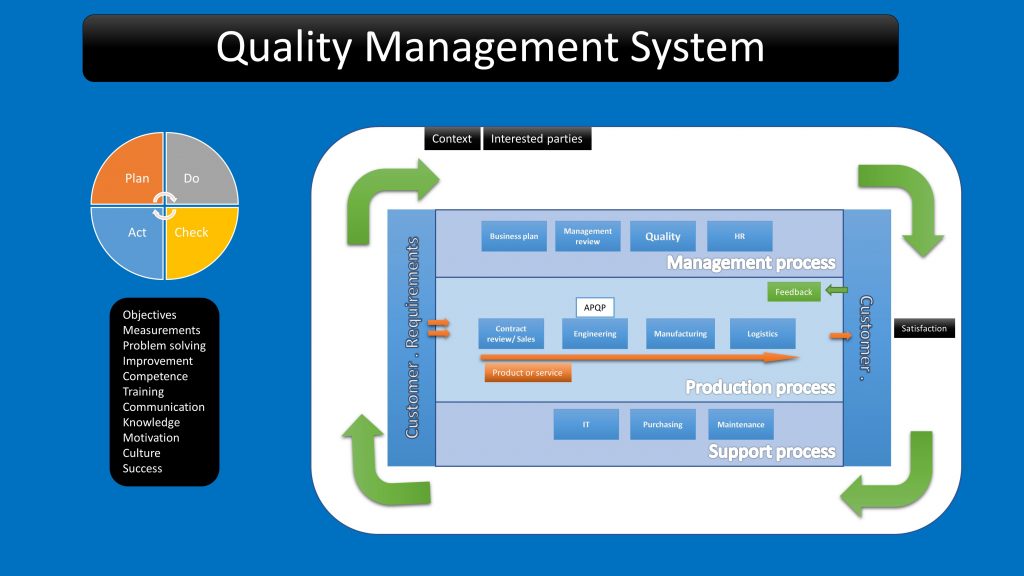
Business Process
And what is a business process? A business process is a collection of activities that transform inputs into outputs as part of the company operation. In easy words, a business process is one element of the whole business operations, for example, the pricing and offer process which starts with the RFQ (request for quote) sent by the customer and involves the technical analysis, feasibility, product and manufacturing review, costing, logistics, pricing and ends when the purchase order for serial products or project nomination is made. One business process can involve activities of different departments (i.e. sales + engineering + production + accounting + quality + logistics + ….).
In a simple way, a business process is one element of the system called “organization or company”. Normally, the business processes interact with each other but also with external players like customers, shareholders, suppliers, competitors, government offices, union, etc. The sum of all external players, physical place and other important external factors is called “environment”. The organization and its environment give shape to something called context. The context depicts the unique constellation of every company which includes its mission, goals, structure, business processes, objectives and environment.
Process approach
What is the process approach?
The easiest possible explanation of the process approach is to graphically depict the main activities of the company regardless of number of people or areas of expertise (i.e. accounting department, purchasing area) by focusing in the main value chains and the required support and management processes.
The main value chain is the sequence of activities performed as reason of existence. For most of the private companies, making money is the main reason and goal either by producing products, providing services or both. Of course there might be out there other organizations with non-profit goals and the main value chain may be a different one but regardless of the goal, such companies also perform activities towards certain objectives, functions or goals (like public schools, government offices, etc) and such main tasks must be defined as the “main or core processes”.
Every company needs direction, decision making, planning and financing. Therefore, there are processes called “administration” or “management”. Activities like maintenance and supply management could be some of the support processes. The definition of all these business processes might vary with every organization because of the nature of the business, conditions, market, culture, country, laws, products and services, customers, etc. For retailers, purchasing products from the producers may be one of the core processes but for a service providers purchasing may be indeed “only” a support process.
In the image below you can see an example of a company that designs, develops, manufactures and sells cellular phones. The process shown could be the core process.
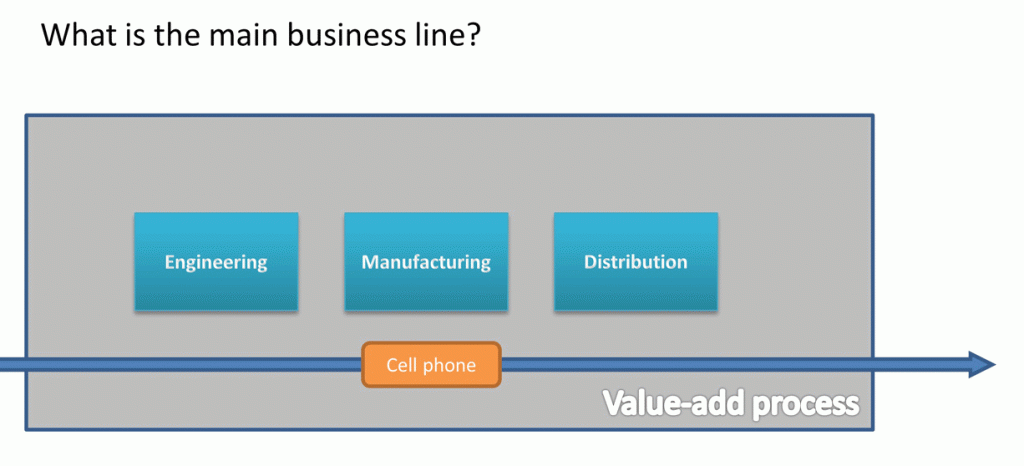
The process map
Example : Our smartphone company
Let’s imagine that the business we mentioned above is our company. We design, produce, distribute and sell cellular phones. As shown above our main business involves designing (engineering), manufacturing and selling/ distributing the phone.
How many process can I define? Which?
That is exactly the tricky part of the standards. ISO9001 as many other specifications describes what must be done as “requirement” but does not always explain “how”. This is because nobody can prescribe how your company must work, every company with its products, services, markets, culture, environment, etc. is unique. Therefore it is up to you and/or the organization to define the context and required processes, controls and interactions.
The standards like the ISO9000 family are of “general use” and applicable to many different kinds of companies. They give you some “room” to give shape and form your own system. But be careful. I have seen companies define 40 manufacturing processes because of the product portfolio they have.
Is this necessary? Maintenance, purchasing, sales and other processes work exactly the same for all 40. Can I, should I have all 40 in my process map or should i have only one “production process”? Well, the answer is: It depends on you, your needs, etc. Just remember, the easiest the better. Let’s finish today with a typical process map that could be used by different types of companies.
Best Regards
Example of a general process map
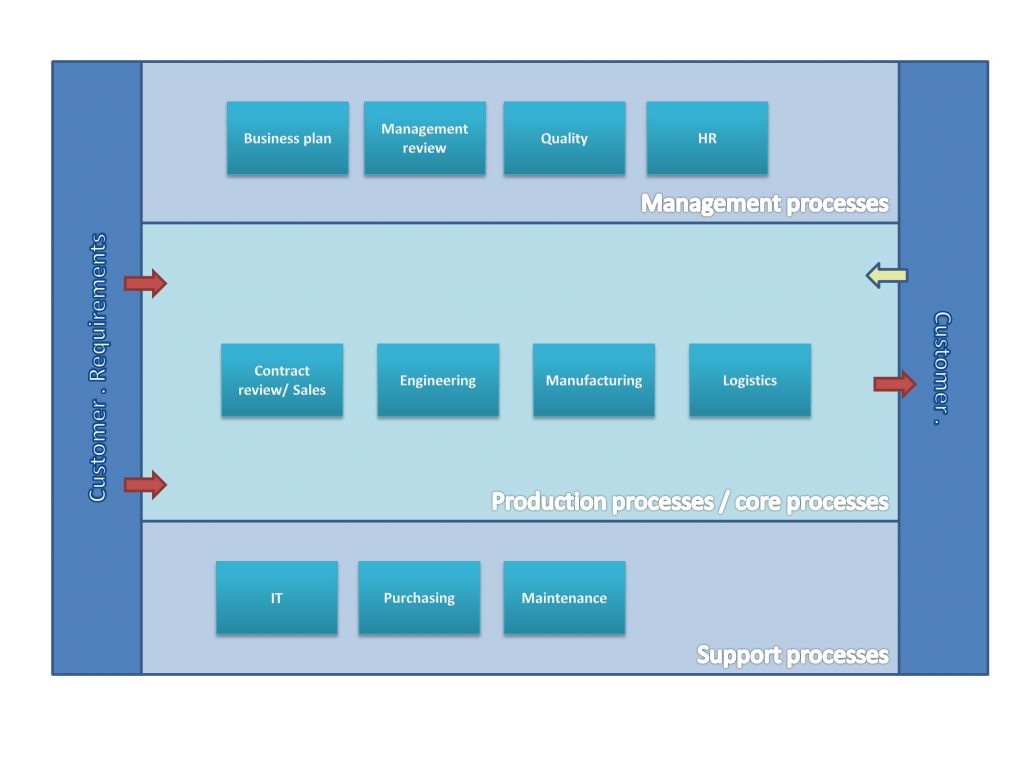

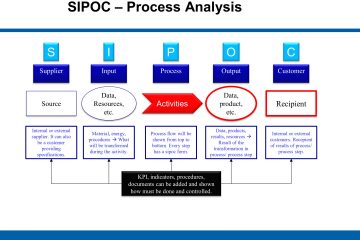
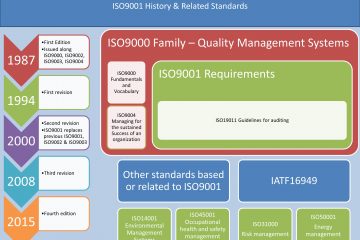
0 Comments